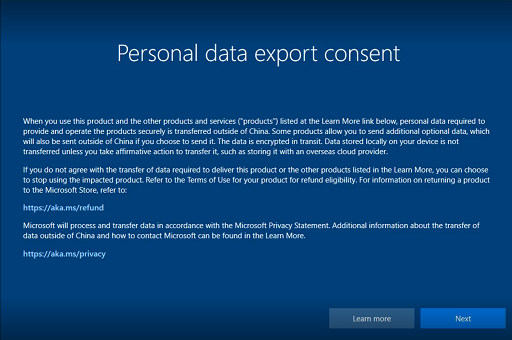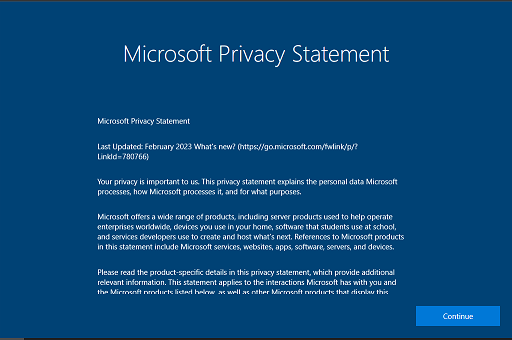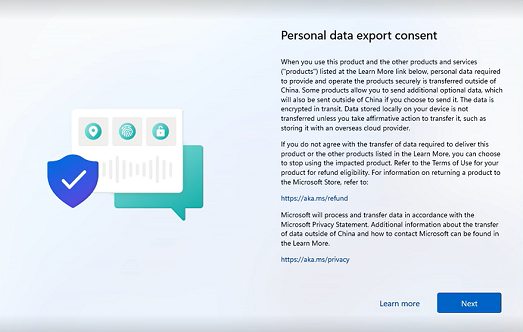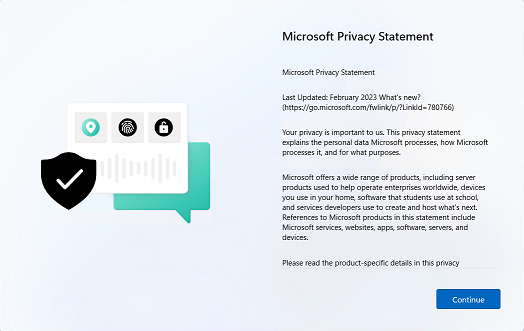IMPORTANT This update replaces the previously released update KB5026964.
Symptoms
A notice is displayed that informs users about the transfer of data outside China after installing a Windows 10 or Windows 11 update that is dated on or after June 27, 2023. For a list of specific Windows updates that introduced this behavior, see the More information section.
|
Personal data export consent |
|
|
Microsoft Privacy Statement |
|
|
Personal data export consent |
|
|
Microsoft Privacy Statement |
|
Workaround
We are aware that the notice is shown to users who log on to a device that is running Enterprise or Education versions of Windows 10 or Windows 11 by using a local user account. If an Enterprise wants to suppress this notice, implement the following workaround.
-
Before you apply a Windows update dated on or after June 27, 2023, create the following registry entry on the Windows 10 or Windows 11 device for each local account.
Registry location
HKEY_CURRENT_USER\SOFTWARE\Microsoft\Windows\ CurrentVersion\CloudExperienceHost\Intent\ PersonalDataExport
Value name
PDEShown
Data type
REG_DWORD
Data value
2
-
Then apply the applicable Windows updates dated on or after June 27, 2023 and then restart the device. For a list of specific Windows updates that introduced this behavior, see the More information section.
Note This workaround will not suppress the notice for any newly created local user accounts that are created.
More information
In response to the Chinese Personal Information Protection Law (PIPL), Microsoft intended to notify Windows users who have local accounts on unmanaged devices about the transfer of some personal data from China to another country or region to process the personal data and enable the product to work as intended. To see the full list of products that are affected by this notice, please see the following support article:
Note We included this explicit notice in the release of the following Windows updates dated on or after June 27, 2023:
Windows 11, version 22H2
Windows 11, version 21H2
Windows 10, version 20H2, 21H2, and 22H2
References
Learn more about data collection and processing in Windows
Enterprise administrators can control whether required or optional diagnostic data is sent to Microsoft. They can also control what connected experiences and many of the essential services that are available to their users. Learn more about the various options available to administrators to manage privacy settings in an organization:
-
Windows Privacy Compliance: A Guide for IT and Compliance Professionals
-
Windows Essential services and connected experiences (for Enterprise administrators)
To learn more about data collection and processing for other affected Microsoft products, please go to the documentation pages for those products.














